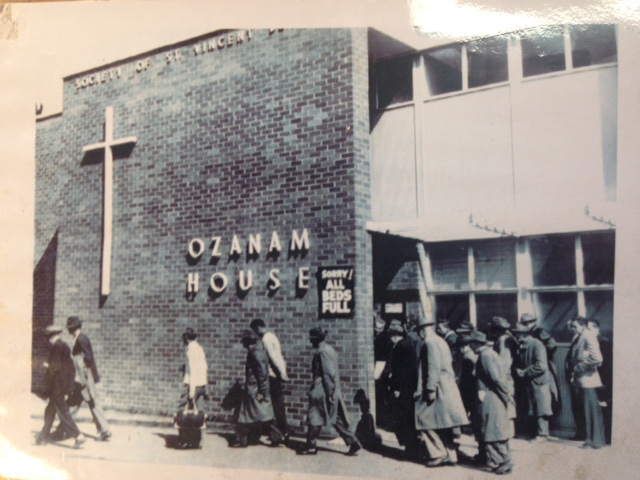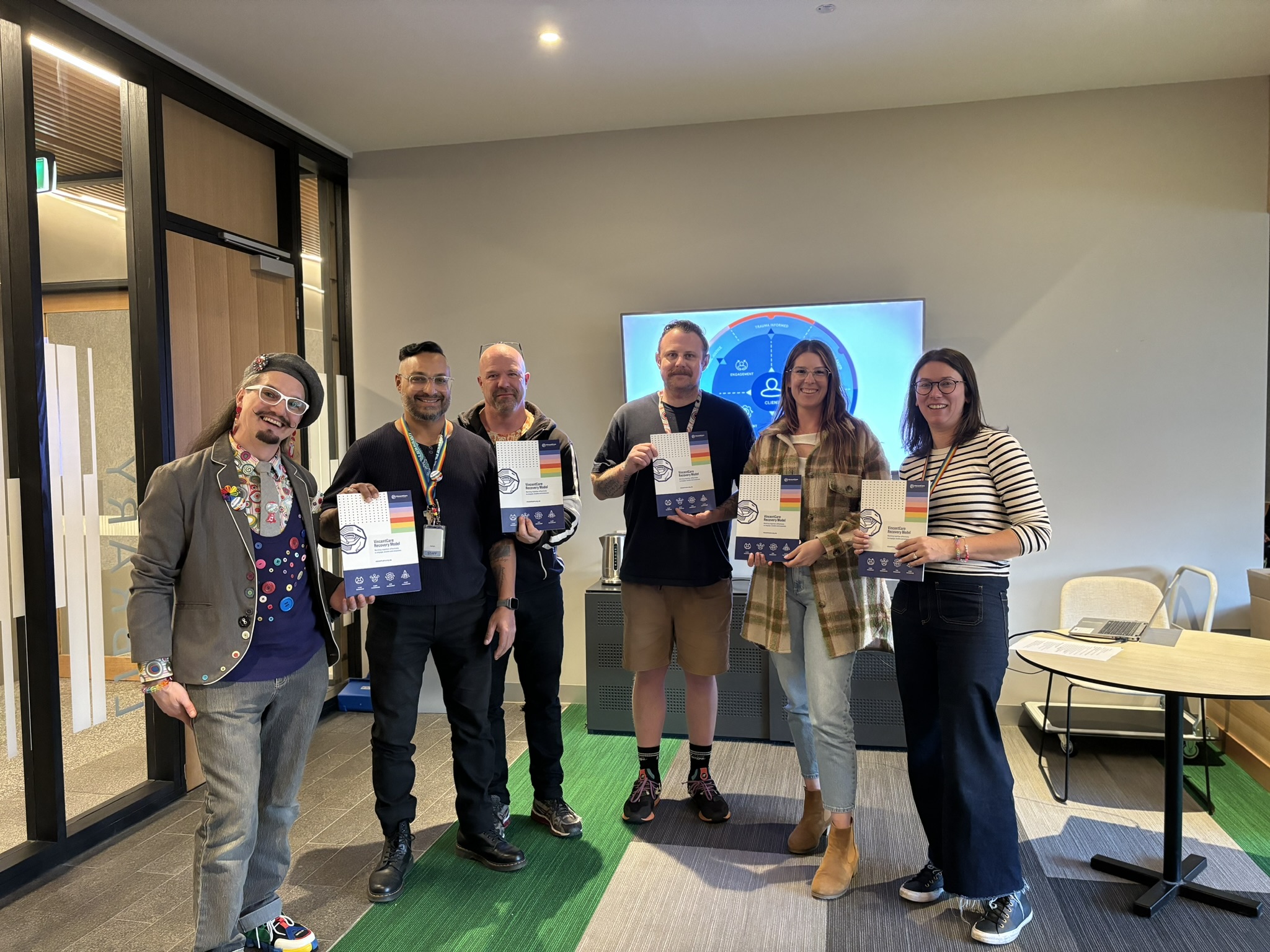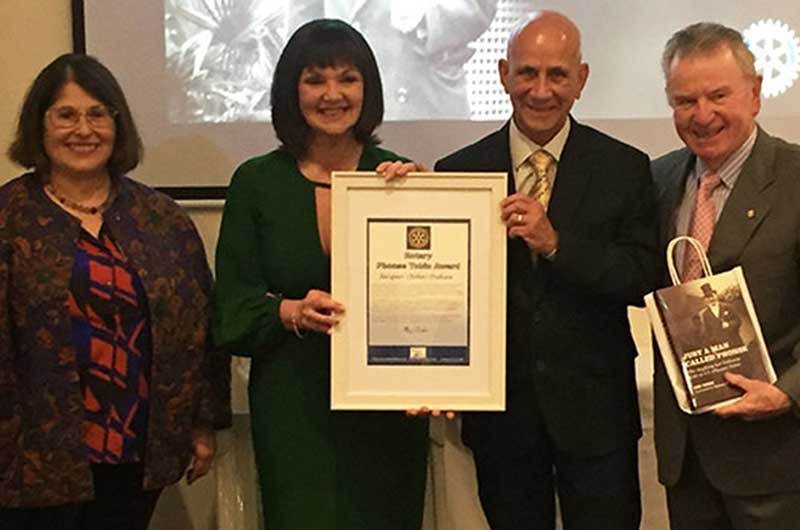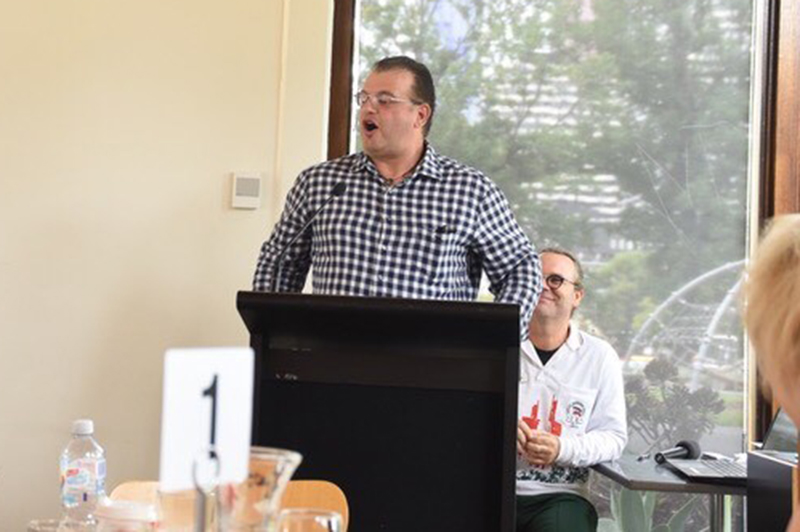
Transforming care: VincentCare launches new innovative recovery model
With a focus on innovation and enhanced person-centred care, VincentCare, part of the St Vincent de Paul Society Victoria Group, launched the much-anticipated VincentCare Recovery Model (VRM) handbook this week. The new comprehensive model refines and updates the foundational Homeless Recovery Model (HRM), developed by VincentCare almost a decade ago.

“This is not a document on the shelf. It won’t sit on a table either,” Paul Turton, Executive General Manager Client Services, highlighted during the launch in the Ozanam House library with guests attending in person and online. “It needs to be something that we refer to constantly, that we constantly enter into a conversation about, and we take a deep and passionate interest in.” Calling it an exceptional piece, Paul acknowledged everyone’s input and dedication. Notably, he credited the Quality Team for their meticulous work and highlighted Sarah James, Quality Support Coordinator, for her leadership in this project.
New essential resources drawing on expertise and latest research
The new essential resource aims to guide and equip staff and volunteers with evidence informed tools and approaches to support individuals facing the complexities of people experiencing homelessness and disadvantage. Holistic, evidence-based practices that emphasise a strengths-based, person/client-centred approach form the base of the model. It now integrates six foundational principles, expanding the number of principles contained in the previous Homeless Recovery Model.
- strengths-based,
- trauma-informed,
- social justice,
- person-led,
- intersectionality and
- integrated practice.
These principles form the basis of our four essential frameworks that support the work of our practitioners and volunteers including: engagement, coordination, case management and participation.
These elements collectively ensure that services meet each individual’s unique needs and goals, fostering a supportive and inclusive environment.
Recognising a decade of development
Paul emphasised the significance of the new handbook, noting that it has been a decade in the making, drawing on the learnings from experience gained in the past, making it a vital tool for new and experienced staff: “The VRM supersedes the HRM, reflecting the evolved practices and insights we have gained over the years.”
Collaborative effort and acknowledgments
Sarah also expressed her gratitude to everyone who contributed to developing the VRM. “This was such a collaborative effort from so many people in the organisation,” she said, acknowledging the numerous staff members who participated in surveys, planning sessions, working groups, endless discussions and fruitful debates.
The process involved extensive research, with the team reviewing hundreds of articles and abstracts, eventually distilling them into actionable content. “Thanks to everyone for doing their staff survey, which gave us a really good understanding of the type of revision we had to do and some great suggestions for future implementation,” Sarah added.
A practical resource for everyday use
Speaking to the changes made in the Coordination Framework, Simon Vella said that “intersectionality is now a key component of the framework and ensures a more client-centred approach to service coordination that will help us to fully consider the barriers an individual faces, and how we can support a client to navigate a complex service system to find the most appropriate supports”.
Emily Page, Manager Support Services, representing the Case Management Team, explained how the new handbook streamlined their processes by reducing unnecessary content and focusing on flexible, client-led practices. “It was really about taking those boxes away, thinking about people’s individual tools, and thinking about the work we do as flexible and creative,” she said. The revised document now offers a more concise and effective framework for case management, emphasising “no wrong door policy”, goal-oriented practice and cultural safety.
Moving forward with the VRM
Daniel Sedgley, from the Engagement Team, noted the engagement framework’s focus on establishing trust and providing personalised support to clients. “With our engagement approach being really focused on and designed to establish trust with clients and inspire motivation for hope, it provides clear guidance not only to clients but to our colleagues, ensuring consistent, reliable, and high-quality support services,” he remarked.
Matthew Parsons, outgoing Manager LGBTQIA+ Inclusion, who advised on the participation framework and cultural safety and inclusion, shared their insights on integrating trauma-informed and intersectional practices into the VRM. “This whole process was worthwhile” they said. “It really shifted our thinking and encouraged us to value and empower the contributions of clients at all levels of consultation and decision making, in a way that was comfortable and safe for the client”.
Now available online for easy access
“This is a living document,” Sarah noted, encouraging everyone to read it. “We hope that it speaks to you and your work.” The VRM is now available online for all staff, ensuring easy access and ongoing engagement.
The launch event highlighted a significant milestone in VincentCare’s journey and its commitment to providing comprehensive, empathic and excellence in its support for people experiencing homelessness and disadvantage. The VincentCare Recovery Model is a testament to the collective expertise and dedication of VincentCare staff and a clear example of our determination to be a practice and thought leader in the community support sector.



